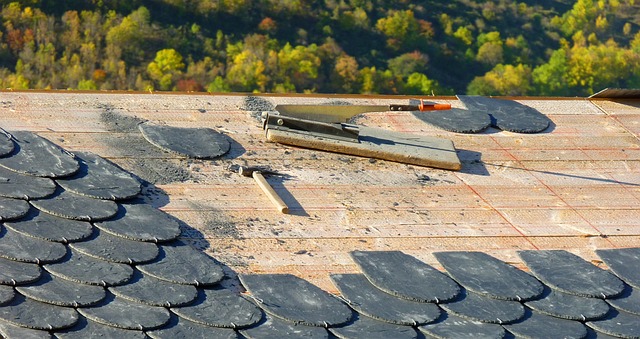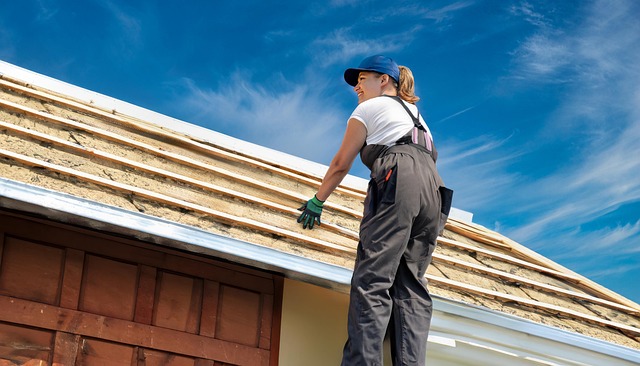Roofers face challenges handling old or hazardous materials like asbestos, lead paint, and banned compounds, which pose significant health and environmental risks. They employ visual identification, labels, or testing kits for accurate detection. Risk assessment is crucial, and professionals take stringent safety precautions, including PPE, ventilation, and adherence to disposal regulations. Before removal, thorough inspections are conducted, following protocols to maintain a secure work environment and minimize ecological impact, making roofing projects responsible and sustainable.
“Ensuring a safe and sustainable work environment is paramount for rooftop professionals. This article delves into the critical process of safely removing old, damaged, or hazardous materials from roofing sites. From identifying potential risks associated with these materials to understanding best eco-friendly disposal practices, roofers can navigate regulatory requirements effectively.
We explore safe removal processes tailored for rooftop experts, providing a comprehensive guide for responsible and compliant operations.”
- Understanding Hazardous Materials: Identification and Risks
- Safe Removal Processes for Rooftop Professionals
- Best Practices and Regulations for Eco-Friendly Disposal
Understanding Hazardous Materials: Identification and Risks

Roofers often come across old, damaged, or hazardous materials during their work, making it crucial to understand these substances and the risks they pose. Hazardous materials can include asbestos, lead-based paint, and certain types of roofing compounds that have since been banned due to their toxic effects on human health and the environment. Proper identification is the first step in safe removal. Roofer professionals are trained to recognize these materials through visual cues, product labels, or specialized testing kits.
Once identified, assessment of the risks involved is essential. Asbestos, for instance, can cause severe respiratory illnesses if inhaled, while lead-based paint chips and dust can lead to neurological damage, especially in children. Understanding these hazards enables roofers to take appropriate precautions, such as donning protective gear, implementing engineering controls like ventilation systems, and ensuring proper disposal of hazardous materials according to local regulations.
Safe Removal Processes for Rooftop Professionals

Roofer professionals employ meticulous safe removal processes to handle old, damaged, or hazardous materials on rooftops. This includes proper personal protective equipment (PPE) such as gloves, masks, and goggles to safeguard against exposure to harmful substances like asbestos or lead. They also use specialized tools designed for safe disassembly and disposal, ensuring no environmental contamination.
Before beginning any removal, roofers conduct thorough inspections to identify the types of materials present and their condition. This allows them to follow appropriate handling protocols, whether it’s encapsulating, transporting, or safely disposing of the materials according to local regulations. Regular training in safe removal practices further equips roofers to navigate these challenges, ensuring a secure work environment for themselves and clients alike.
Best Practices and Regulations for Eco-Friendly Disposal

When it comes to removing old, damaged, or hazardous materials from roofing projects, best practices and regulations are crucial for eco-friendly disposal. Roofers must adhere to local, state, and federal guidelines that govern the handling and dumping of construction waste. This includes proper sorting and packaging of materials like asbestos, lead, and other toxic substances to prevent environmental contamination.
Best practices involve using specialized containers and transport methods approved for hazardous waste. Roofers should collaborate with certified disposal companies that comply with ecological standards. Regular training on safety protocols ensures workers are equipped to handle various roofing materials responsibly, minimizing the ecological footprint of their operations.
When it comes to rooftop repairs or replacements, roofer professionals must prioritize safe removal of old, damaged, or hazardous materials. By understanding the identification and risks associated with these materials, implementing proper removal processes, and adhering to eco-friendly disposal regulations, roofers can ensure a safe work environment and contribute to a sustainable future. These best practices not only protect workers but also safeguard the environment, making it a win-win for all.
